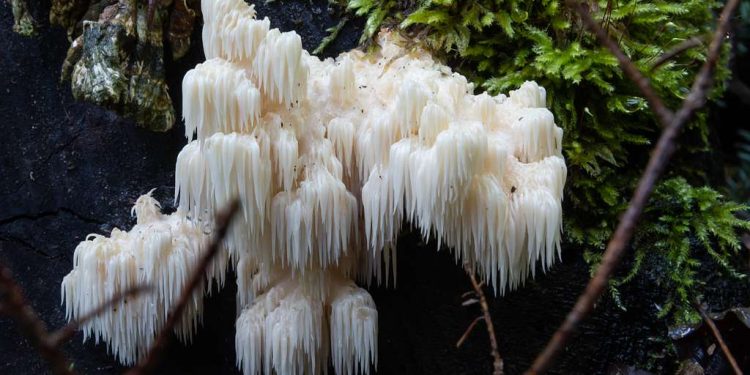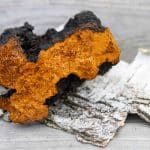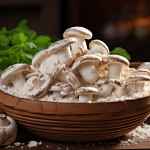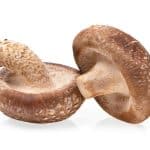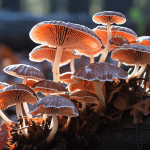Cooking lions mane mushrooms is incredibly simple, and well worth the time you spend learning more about this puffy, white mushroom. It is believed to taste seafood-like, like crab and lobster, but I would dispute this description.
Because of mushrooms unique flavors, cooking them as simple as possible is best. The dense texture of Lions Mane Mushrooms means they are excellent to fry, stew, in sauces, and to roast.
I was lucky enough to learn about lion’s mane mushroom from a friend of mine. She grows these mushrooms and gave me several mushrooms to use in cooking.
Where have these mushrooms been my whole life! I now cannot get enough of these. A lion’s mane mushroom growing kit is on it’s way to my home so I can start growing my own.
Now that I have learned a little bit more about this incredible mushroom, I tracked down a local farmer who was willing to sell me a few. Also, check your local farmers markets.
How to Cook Lion’s Mane Mushroom
First you have to prepare your lion’s mane for cooking. Clean the mushrooms, remove all the mud and any brown spots. Shred the mushrooms using your hands, breaking it up into smaller pieces.
Or, cut them up with a chefs knife to chop them up into slices, or chop them up into smaller pieces, depending on how you like them to be prepared. Remember to keep things simple when cooking mushrooms. Next go ahead gather all your ingredients that you want to cook your mushrooms with.
In a pot on medium-high heat, throw in mushrooms to the dry skillet. Cook off any water from the mushrooms before adding oil or butter. Dry roast mushrooms during the early cooking stages to get the best results.
Here is a cool video on how to make lion’s mane mushroom steaks:
How Long To Cook Lion’s Mane Mushrooms
When sautéing lion’s mane mushroom continue to add olive oil as needed, and cooking on medium heat until you get golden brown color in mushrooms. Cooking times will range from 5-10 minutes depending on how moist your mushrooms are.
Cooking Lion’s Mane on a Griddle
Preheat a Blackstone griddle over a medium-high heat. Cut mushrooms to desired sizes. On a dry, hot griddle, add the cut lions mane mushrooms and saute for about 2 minutes. Using a spatula, flip over the mushrooms.
Continue cooking for several minutes, until you get a nice, brown color. You want to allow the mushrooms to slightly dry out. At this point, you can add whatever flavors you like, like butter, garlic, spices, olive oil, or cooked mushrooms into your desired recipes.
FAQ’s on Cooking Lion’s Mane
Can Lion’s Mane Mushrooms be dried?
In the dehydrator, put the smaller pieces of mushrooms on a drying rack in one layer. At 110-125 degrees, dehydrate for a few hours, until no moisture remains in the mushrooms.
Mushrooms will have a leathery look, and drying times vary depending on the moisture content. Once mushrooms are fully dried, store them in sealed containers for up to one year.
How To Store Leftover Mushrooms
These fresh mushrooms only keep for about one week. To avoid waste of your fresh mushrooms, you are encouraged to roast any you are not using for up to seven days. Once sautéed, chill and store in a sealed container in the refrigerator up to 6 days.
What Can You Make With Lion’s Mane Mushrooms?
Pasta dishes, omelets, soups, stews, risottos, wild rice, casseroles, stroganoff are a few recipes that can be made.
Can I Freeze Any Unused Lion’s Mane Mushrooms?
Cooked lions mane mushrooms may be frozen. It is not recommended that you freeze fresh mushrooms due to high moisture content that these mushrooms contain. Once browned, chill and store in a freezer-safe container or in a freezer-safe bag.
Put a label on it that says the proper name, date, and how many are in the container. Seal the vacuum pack to prolong the mushrooms lifespan.
No thawing required once they are ready for use. Simply throw it into a recipe of your choice, or simmer it on a hot pan.
You can find our favorite capsules, powders, and tincture’s on the following pages of our website and learn more about each individually:
The Best Lion’s Mane Supplement
Additional Resources:
